Tool Bag Takes Out Tail Rotor: Fatal AS350B2 Accident, Tweed, ON (UPDATED 30 Oct 2019 with Final TSB Report)

Wreckage of Hydro One Networks Airbus Helicopters AS350B2 C-GOHS need Tweed, ON on 14 December 2017 (Credit: TSB Canada)
Four died when a tool bag came loose and struck the tail rotor of a helicopter carrying workers of an electricity utility company. The accident involved Airbus Helicopters AS350B2 C-GOHS operated by Ontario’s Hydro One Networks need Tweed, ON on 14 December 2017.
The Transportation Safety Board of Canada (TSB) say in an initial report on 21 December 2017 that a single pilot and three Hydro One linesmen were on board, supporting maintenance on high-power electricity transmission lines:
As part of the work being conducted, a few bags used for carrying tools and supplies were carried externally on a platform extending out of the right side of the fuselage. These bags, when carried externally, are normally attached with double-lock carabiners.
Shortly before the accident, the pilot picked up the 3 linemen at the base of a tower and was transporting them to a nearby staging area. While nearing the staging area, one of the bags that was being carried externally blew off the platform and, along with its attached carabiner, struck the tail rotor.
Tool Bag from Hydro One Networks Airbus Helicopters AS350B2 C-GOHS need Tweed, ON on 14 December 2017 (Credit: TSB Canada)
Tail Rotor Hydro One Networks Airbus Helicopters AS350B2 C-GOHS need Tweed, ON on 14 December 2017 (Credit: TSB Canada)
Tail Rotor of Hydro One Networks Airbus Helicopters AS350B2 C-GOHS need Tweed, ON on 14 December 2017 (Credit: TSB Canada)
Shortly thereafter, while the pilot was attempting to land, the helicopter departed from controlled flight, all 3 passengers became separated from the helicopter while it was still airborne. The helicopter subsequently crashed nearby.
Debris of Hydro One Networks Airbus Helicopters AS350B2 C-GOHS need Tweed, ON on 14 December 2017 (Credit: TSB Canada)
We have found a heavily damaged white canvas bag, with a damaged carabiner attached, and the tip of a tail rotor blade over 600 meters away from the crash site.
Two of the three linesmen were not wearing seat belts.
Safety Advisory
TSB have issued a safety advisory:
Cargo must be adequately secured at all times, to prevent it from shifting or departing the helicopter during flight.
Passengers who do not wear seat belts risk serious injury or death in the event of an emergency.
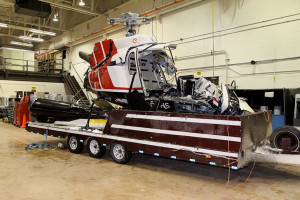
Wrecage of Hydro One Networks Airbus Helicopters AS350B2 C-GOHS Recovered for Investigation (Credit: TSB Canada)
TSB Final Report Issued 30 October 2019
TSB report that:
At 1144 Eastern Standard Time, the pilot picked up a crew of 3 power line technicians near the bottom of a tower for a return flight to the staging area. It had become common practice for power line technicians to attach tool bags and other small items to the external platform for flights to and from work sites. In line with this practice, the technicians attached a few items to the platform while boarding the helicopter, and then took their seats in the aft cabin.
TSB also note that while there were specific procedures for stowage and securing bags when workers board from a power tranmission line in the hover via a helicopter ‘Air Stair‘ eternal platform…
…when boarding from the ground, there were various practices relating to the storage and securement of the preform bags [ a 4‑foot‑long canvas supply bag]. The practice of carrying external loads attached to the platform was not a formalized procedure at the company and, as a result, adequate controls were not in place to ensure that these objects were properly stored or secured. Consequently, an empty canvas supply bag with an attached carabiner that was being carried on the platform was not adequately secured before the helicopter departed for the return flight to the staging area.
The pilot was likely unable to confirm that the load was stored inside the cabin because he was occupied with controlling the helicopter during the light-on-skids pickup and would have been unable to turn his head to see the entire Air Stair.
When the helicopter was 0.26 nautical miles from the staging area, the canvas bag separated from the platform and struck the helicopter’s tail rotor, causing significant damage, severe imbalance, and intense vibration.
Shortly after, while the pilot was attempting to land, the helicopter’s tail rotor, tail rotor gearbox, and vertical fin separated from the helicopter. The helicopter became uncontrollable and collided with terrain. The 3 power line technicians were unrestrained and became separated from the helicopter, either slightly before or during the impact, and received fatal injuries from contact with the helicopter or the surrounding terrain. The pilot was fatally injured on impact. The helicopter was destroyed.
Each seat in the aft cabin was equipped with a safety belt that included a detachable shoulder harness; however, the harnesses had been rolled up and taped with electrical tape before the flight, preventing them from being used.
The rear bench safety belt system of the occurrence helicopter, with inset image showing how the shoulder harnesses were rolled up and taped (Credit: TSB)
Transport Canada regulations require the use of these safety belts; however, the current definition of a safety belt in the regulations was interpreted to mean that compliance with the regulations could be achieved by using the lap strap with the shoulder harness or the lap strap alone.
Remarkably:
In addition to not being able to attach the shoulder harnesses, the technicians involved in this occurrence did not attach their lap straps either, possibly because they perceived the risk on the short flight to be low, or because they found it difficult to attach the lap straps over their cold weather gear.
TSB comment that:
…individuals…are impaired by the cold, critical tasks may not be performed properly, which could increase the risk of injury to personnel and damage to equipment.
TSB Safety Recommendation A19-01: TSB recommends that:
…the Department of Transport amend the Canadian Aviation Regulations to remove any ambiguity associated with the definition of “safety belt.”
Hydro One Networks has taken the following safety actions since the accident:
- It has suspended operations involving the Air Stair.
- It has completed a comprehensive review and revision of the Helicopter Services Operations Manual to include enhancements to training program requirements, revised job descriptions and documentation procedures.
- It has received approval from Transport Canada Civil Aviation for the new Company Operations Manual.
- It has reviewed, restructured, and reassigned multiple Hydro One Document System documents, which have been further developed into Aviation Standard Operating Procedures.
- It has expanded the Flying in the Wire Environment training beyond Hydro One aircrew and aircraft maintenance engineers to over 100 line managers, field supervisors, and contractor helicopter pilots.
- It has had all flight crew complete crew resource management (CRM) training in anticipation of the training being required under the CARs, as detailed in TC Advisory Circular No. 700-042 (Crew Resources [sic] Management).
- It has developed the training for essential persons assigned on-board duties within the CRM training module.
- It has developed and delivered a restructured training program and flight following protocol for all company flight followers.
- It has begun investigating the introduction of simulator training (Level 7 flight training device or Level D full flight simulator) to enhance emergency procedures training for all pilots.
- It has completed the reorganization of the helicopter services operation, creating a separate line of business with a director reporting to the vice president, Shared Services, and a full-time dedicated aviation safety manager.
- It has recruited a Director of Helicopter Services to develop and implement business objectives and long-term department strategy.
- It has recruited a Manager of Aviation Safety to support the development and implementation of a safety management system (SMS).
- It has engaged an independent design approval representative to review all aspects of the certification of the Air Stair, including the relevant Flight Manual Supplements.
- It has conducted comprehensive audits of all third-party helicopter contractors to ensure alignment with Hydro One expectations.
- It has completed a macro-level assessment of all flight risks common to specialized tasks conducted by Helicopter Services.
- It has repositioned Helicopter Services as a stand-alone business unit within Shared Services to improve corporate communication and integration.
- It has added the position of Fleet Analyst to support business and corporate administrative activities.
- It has added the position of Operations Coordinator to support safe and efficient job planning and line of business integration.
- It has added the term position of Occupational Health and Safety Coordinator to support the Helicopter Services safety program.
- It has implemented a tablet-based electronic flight bag program to facilitate flight crew access to current policies and procedures and reference documents in the field, detailed aircraft performance and flight planning information and real-time weather information in flight.
- It has carried out an updated training program for Distribution Operations Management Centre personnel assigned flight following duties.
- It has evaluated equipment to support the phased implementation of a flight data management program for gathering flight operations data to support proactive SMS activity.
- It has communicated with all operations employees to reinforce current work procedures, including the fact that everyone inside the helicopter is to wear a seatbelt, including a shoulder harness (when provided).
English / French news conference video.
UPDATE 31 October 2019: A Canadian broadcaster reported just prior to the TSB report’s release that a Ministry of Labour investigation stated:
[Two] of the deceased Power Line Technicians involved in the incident were still at the apprentice stage of their Hydro One careers while the other Power Line Technician was not a foreman or supervisor for this operation.
Safety Resources
Previous Aerossurance articles include:
- Bell 429 TR Pitch Change Link Bearing Failure: Bell Helicopter issues an Alert SB but it takes 6 months for an ‘Emergency’ AD and compliance by the operator.
- Fatal H500 /369D Low Altitude Hover Power Loss: Power Line Maintenance Project: An engine compressor failure while installing power line markers resulted in an unsurvivable impact and fire.
- Ignoring Corrosive Environment Brings Down B206 Helicopter: The Aviation Safety Council of Taiwan identify a surprising lack of aero engine maintenance knowledge and a series of non-compliances in an aircraft spray washing powerlines.
- The Tender Trap: procuring aviation services
We have previously written:
NTSB has issued a safety alert All Secure, All Clear – Be vigilant regarding accountability and security of items (SA-26)
UPDATE 25 January 2018: The US National Transportation Safety Board (NTSB) published their report into a non-fatal Hughes (MD) 500 / 369E N311VT accident in Hawaii on 4 October 2016 (photos):
The commercial pilot reported that, after completing an external cargo lift operation, he landed at a remote location to jettison the lift cable and to board the two ground workers for a ferry flight back to their home base.
Shortly after liftoff, the pilot felt a moderate aberration in the cyclic flight control, followed by a significant vertical vibration. The pilot subsequently observed that the main rotor (MR) blade track had a substantial blade spread. Subsequently, the pilot conducted a forced emergency landing…
…examination of the helicopter revealed that one MR blade was missing about 9 inches of its blade tip, consistent with impact with an object of substantial mass…
The pilot reported that he released the lift cable before the flight…[and]…the ground crew placed the coiled cable in the rear compartment that had no doors.
…based on the damage to the MR blades, it is likely that the cable exited the helicopter during liftoff and subsequently impacted the MR, which resulted in the separation of an MR blade tip and the vertical vibration of the helicopter.
This accident, while fortuitously non-fatal, pre-dated the Ontario accident by over a year.
UPDATE 14 November 2018: The NZCAA has issued a safety alert on loose articles. This is reported by the press to be after a specific fatal accident (Hughes 369D ZK-HOJ 18 Oct 2018) were witnesses reported seeing clothing fall from the helicopter and become wrapped around the tail rotor. The alert points to a Robinson Helicopter safety video.
UPDATE 20 December 2018: TAIC issue an update on the New Zealand accident:
There is evidence that a pair of over-trousers that had been packed in the cabin came out of the helicopter and became entangled in the tail rotor. Paint marks on the over-trousers matched the colour and profile of the tail rotor blades, and marks on a tail rotor blade match a zip and dome connector on the over-trousers. …evidence also revealed three incidents in the month prior to the accident in which doors on this helicopter opened in flight. Effective safety management depends on such incidents being reported and investigated, but none of these occurrences was recorded in the operator’s incident reporting system.
UPDATE 10 June 2019: Troublesome Tiedowns: The Sequel A Robinson R22 suddenly fails to respond to control inputs and descends and impacts the sea. Investigators find a tie-down wrapped around the main rotor head.
UPDATE 13 July 2019: Helicopter Wirestrike During Powerline Inspection
UPDATE 1 September 2019: King Air 100 Stalls on Take Off After Exposed to 14 Minutes of Snowfall: No De-Icing Applied
UPDATE 16 September 2019: Fatal Snowy Powerline Inspection Flight
UPDATE 6 February 2020: Regional coroner calls inquest into four deaths in 2017 Hydro One helicopter crash and Inquest to be held into deaths of Hydro One workers in 2017 helicopter crash near Tweed
UPDATE 21 February 2020: Fatal MD600 Collision With Powerline During Construction
UPDATE 7 May 2022: Loose Clothing Downs Marijuana Survey Helicopter
UPDATE 24 September 2022: Fire Extinguisher Cover Fenestron FOD
UPDATE 19 November 2022: Whiteout During Avalanche Explosive Placement

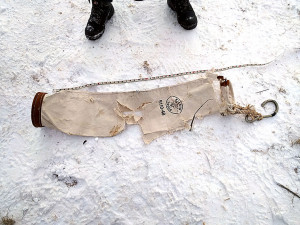


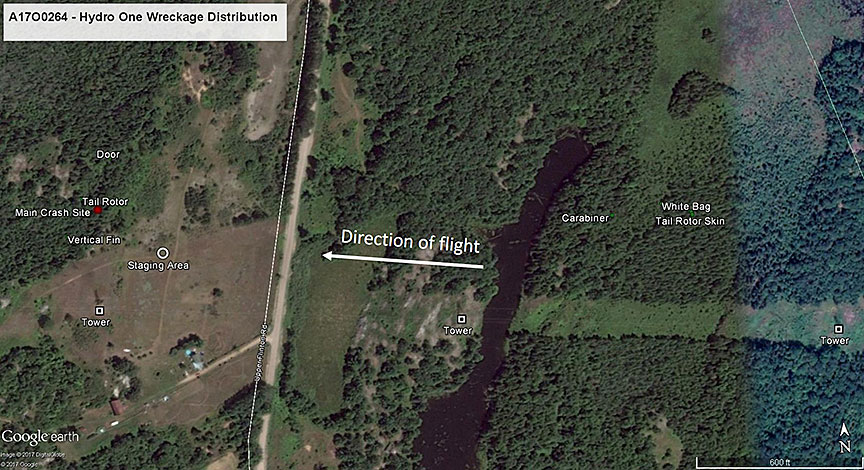
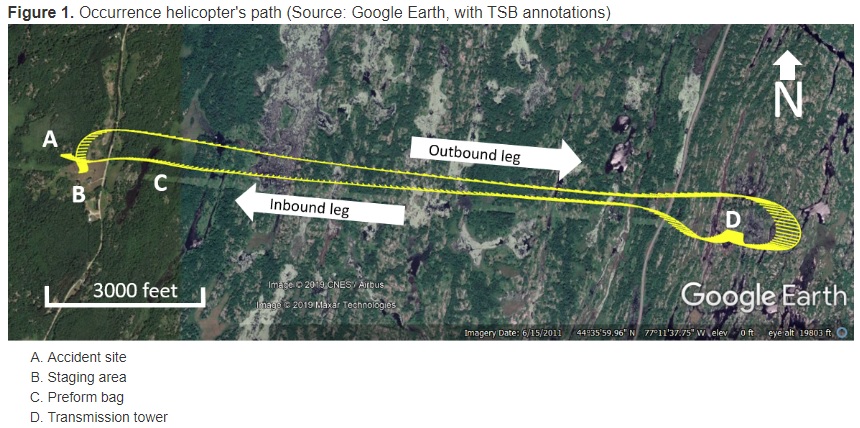
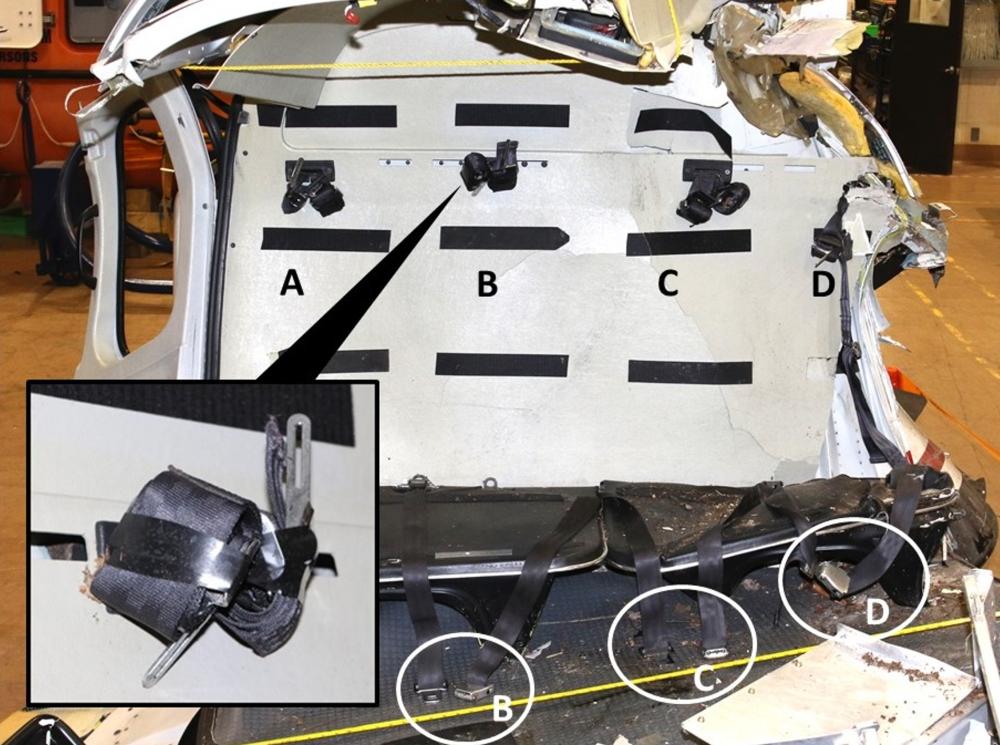
Recent Comments